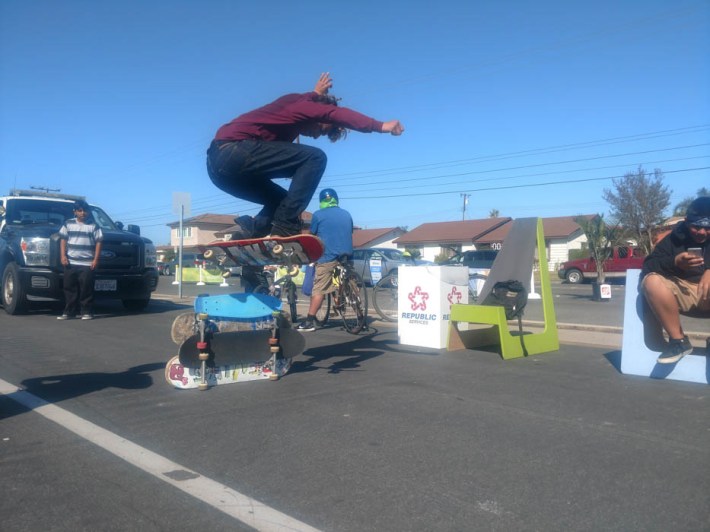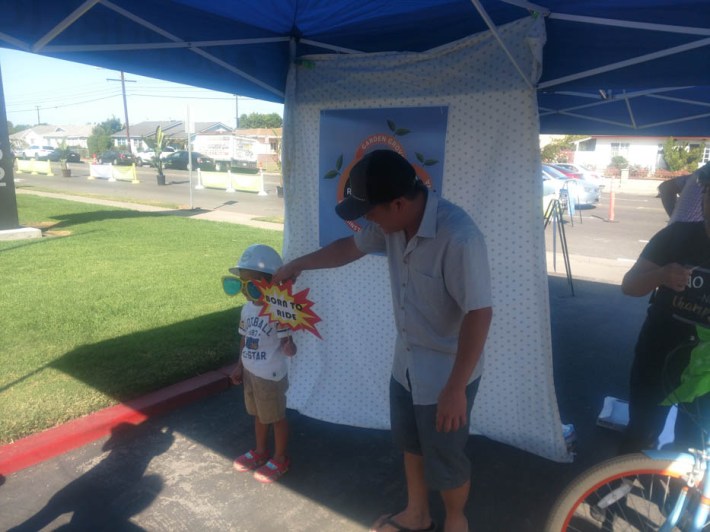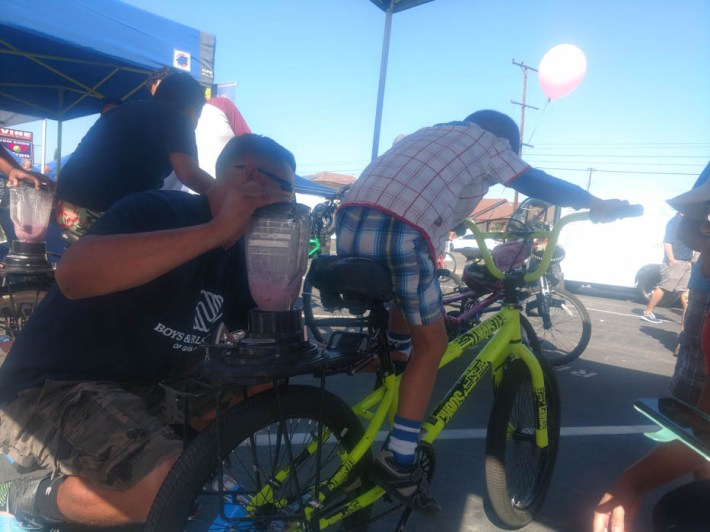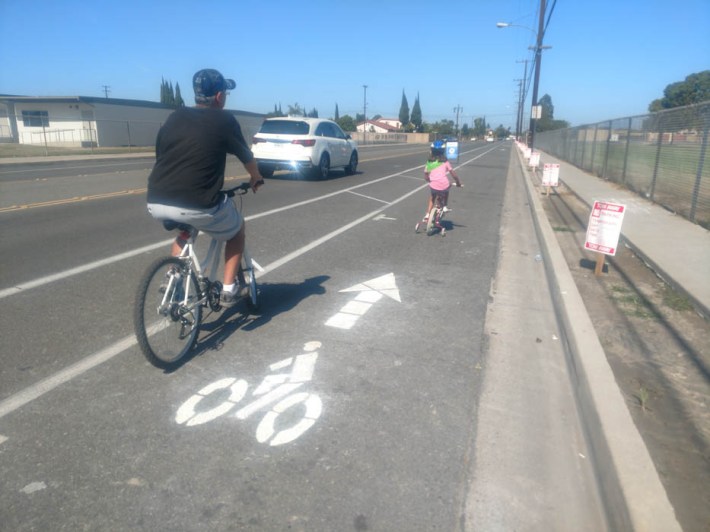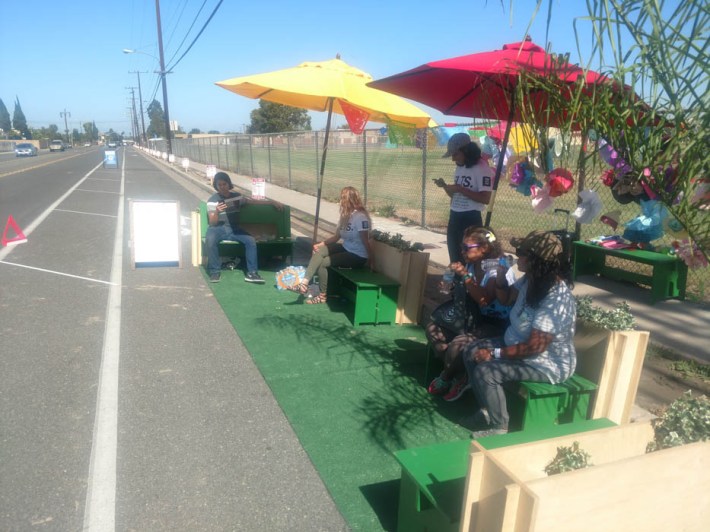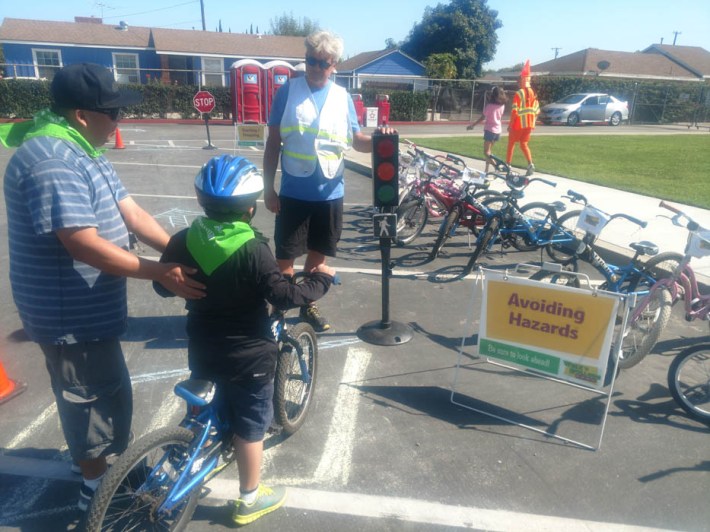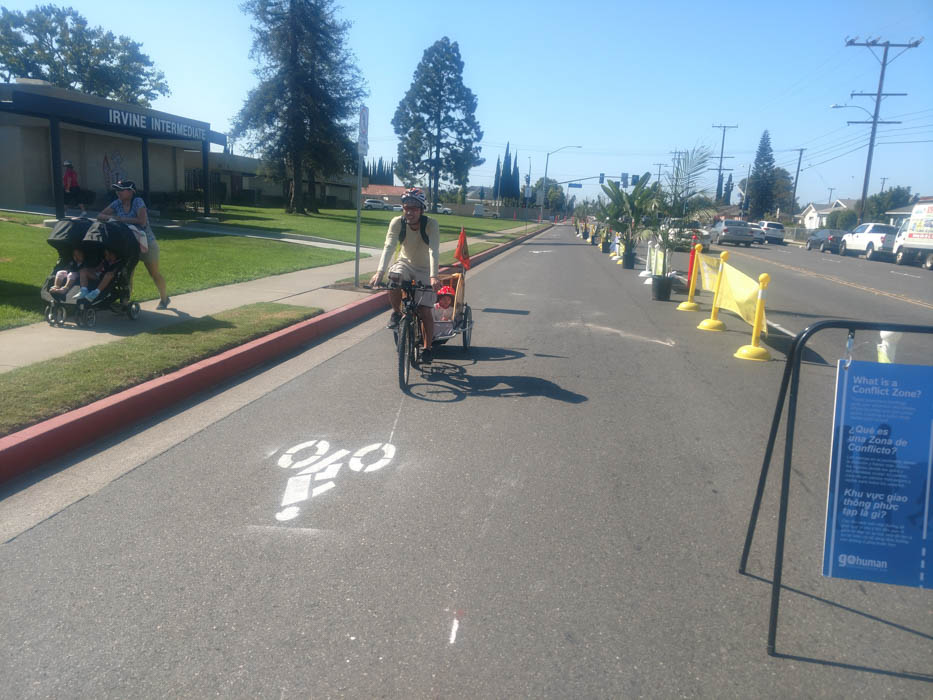Santa Ana resident Martin Mares remembers when he was 8 years old riding his bike on Hazard Avenue sidewalks to get to soccer practice. Mares, who grew up near the intersection of Euclid and Hazard, never questioned why he chose the sidewalk; he knew only that the street felt unsafe to ride.
"No way would I ride on the street," Mares said.
Last Saturday from 10 a.m to 2 p.m., a half-mile stretch of Hazard Avenue was made into a haven for bicyclists of all ages. What is usually a travel lane next to curbside parking became a protected bike lane, complete with a physical barrier of potted plants and banners separating cyclists from passing cars.
The bike lane, which was only up for the day, along with the rest of the day's activities were part of a larger initiative to add bicycle infrastructure on Hazard Avenue. If built, the Hazard Avenue protected bike lane would run more than four miles across Santa Ana, Garden Grove, and Westminster. Though the event technically took place in Garden Grove, at James Irvine Intermediate School, Santa Ana on the east is only one block east of the school, and Westminster is across the street.
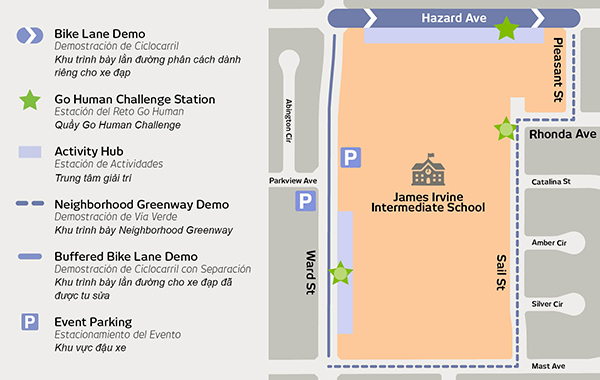
The project is being led by the County of Orange through District 1 Supervisor Andrew Do's office, and is being coordinated among the three cities. Orange County Public Works is currently working on the bike lane design, and officials want to hear from community members about the project.
"In the District 1, we have the highest rate of juvenile diabetes and obesity in Orange County, so it's incumbent on all of us to create more opportunities for healthier lifestyles, open space, and alternative transportation," Do said. "That's what this effort here today is: to get community feedback, to present to you our idea, and then with your input we will decide on the ultimate format for the bike lane here."
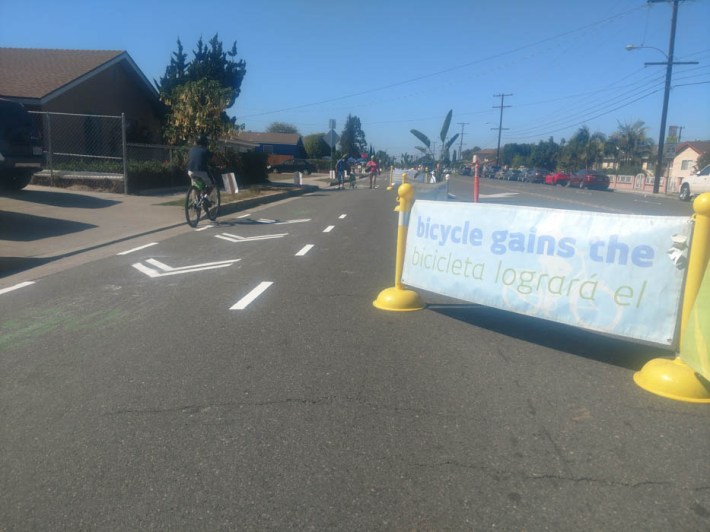
The County partnered with Southern California Associations of Governments’ (SCAG) Go Human campaign, an outreach and advertising initiative, on Saturday’s Redefine Hazard Avenue event. This is the sixth Go Human event in Orange County where temporary demonstrations--of things like bike lanes, open streets events, and parklets--are showcased to demonstrate tangible examples of the kinds of projects the cities hope to realize.
Many government officials are rooting for the Hazard project's success. In 2013, the Hazard Avenue corridor was identified as part of a study of regional bike connections by Orange County Transportation Agency (OCTA). Hazard's portion is roughly four miles, but it is part of a regional corridor stretching 11.4 miles that connects Seal Beach to the west and Santa Ana to the east. In 2016, through its Bicycle Corridor Improvement Program (BCIP), OCTA awarded $3 million to construct the four-mile project.
The project was also recommended by SCAG to receive funding through the MPO component of the Active Transportation Augmentation program. If the California Transportation Commission approves SCAG's recommendations, the Hazard project could receive $3.5 million as early as next year. If that happens, BCIP funds would be returned to OCTA.
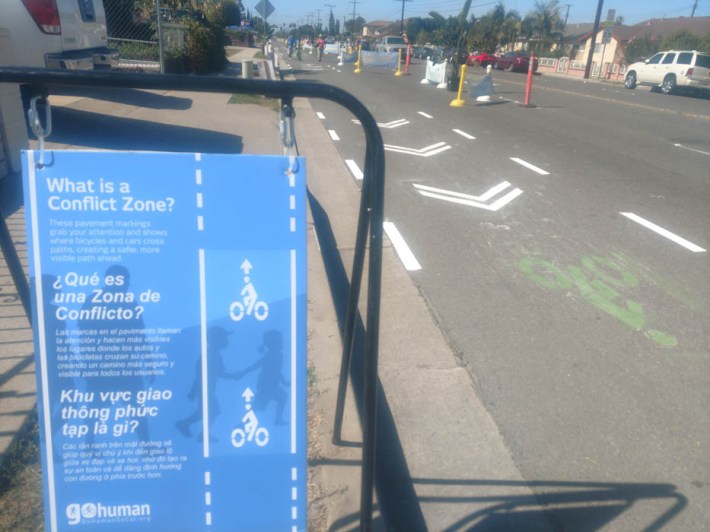
Even though funding hasn’t been an issue for this project, each city, and its community, still have to give the project their blessing. And while the current design is proposed as a continuous protected bike lane, that could change depending on community feedback, said Adam Ramos, OC Public Works civil engineering assistant.
Saturday's event was the start of gathering feedback from community members about the project. People could give their feedback through comment boards, by filling out a survey, or by talking to city and county staff at the event.
Noemi Ambriz, 32, was out walking the route with her husband and two kids on bikes. She said many kids in the area ride on the sidewalk and that if the bike lane wasn’t here, it wouldn’t be safe to ride on the Hazard.
As Martin Mares rode down the bike path, he couldn't help but feel a little envious. While he hopes more residents become curious about the protected bike lanes and maybe cities provide more education around these kinds of things, he wished he had this around when he was growing up.
"I would have used it if it was here," Mares said.

